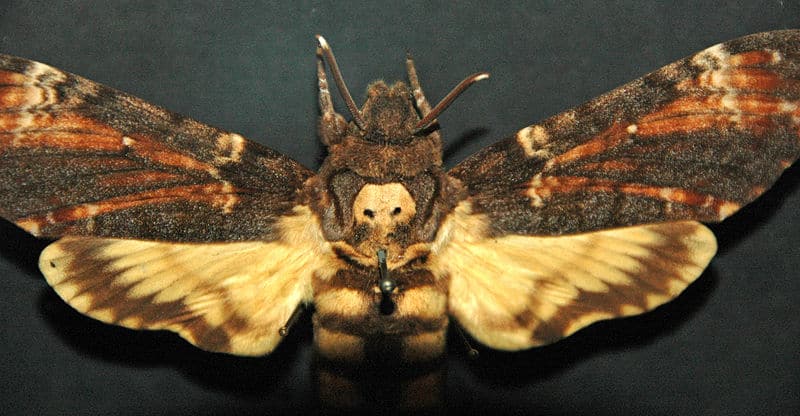
Death’s-head Hawkmoth Facts
- Distinctively, the eye-catching common name for this amazing Lepidoptera remains that of the Death’s-head Hawkmoth. Perhaps most notably, though, the unusual term actually serves as the common name for a total of three species placed within the genus Acherontia.
- The distinctiveness of these three forms, however, does not simply stop there. That’s because, in addition to the astonishing obvious physical trait, multiple other facts also work to set it apart from most other types of moths. These, in fact, are fascinating in their own right.
- Amazingly, the astonishing and highly unusual Death’s-head Hawkmoth evolved the ability to emit a high-pitched chirp. This action only occurs, though, when the arthropod feels either threatened or irritated. Few insects known to entomologists can make sounds internally.
- All three recognized varieties also evolved as relatively rapid fliers. In point of fact, one of them, the Acherontia atropis, constitutes the fastest known moth on the entire planet. That’s because individuals of that species have the ability to reach speeds of up to 30 mph (48 kph).
- Unfortunately, the IUCN, does not currently have a listing for any of the three forms of this wonder. That’s surprising, given the fact that each of them qualifies as quite rare. Like many creatures, these obviously face threats such as ongoing climate change and habitat loss.
Related Articles

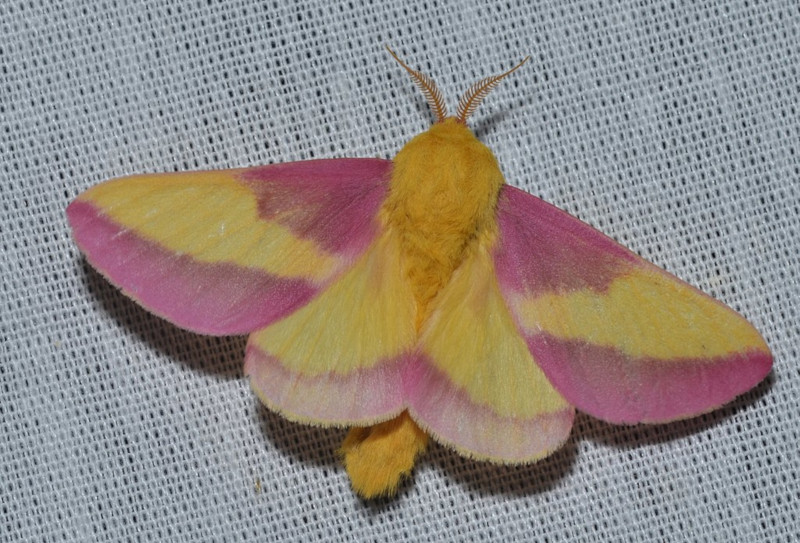

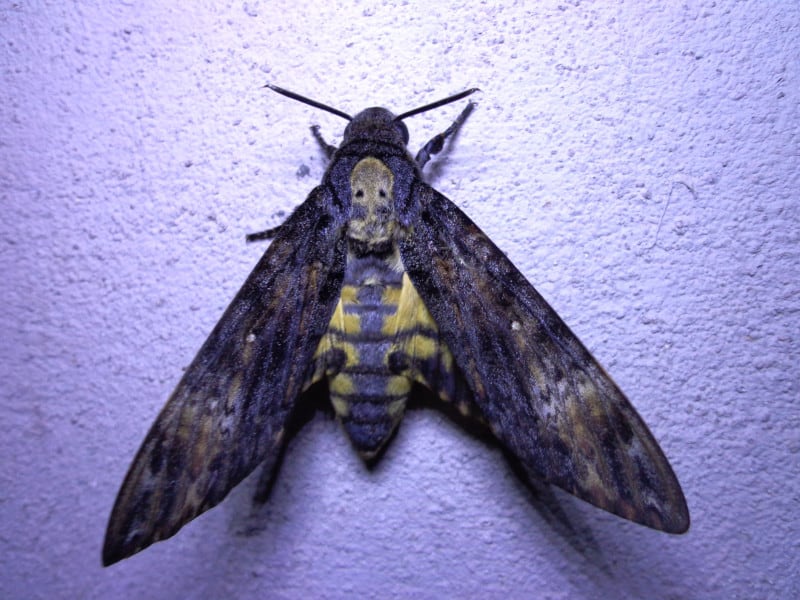
Death’s-head Hawkmoth Physical Description
Not surprisingly, numerous physical differences naturally exist between the different types of Death’s-head Hawkmoth. All three types, however, also, as is to be expected, remain quite similar in terms of rough appearance. Many general descriptions therefore apply equally to them all.
Intriguingly, it must be pointed out, though, that measured adult wingspan varies quite significantly, even within the same gender and species. While not unknown, this trait definitely qualifies as moderately uncommon. Due to this fact, adults range in width of wings from 2 – 8 in (5 – 20 cm).
Understandably, like the majority of Lepidoptera, this marvel of Nature displays a moderate degree of sexual dimorphism. As a result of this physiological trait, in its case, females generally develop slightly larger than the males. Examples of that sex also tend to be slightly bulkier in shape.
The body of the magnificent Death’s-head Hawkmoth also displays a comparatively thick, bullet-shaped form. Its two forewings further develop as relatively long and narrow in structure. Yet the hindwings, however, appear much shorter, like most related forms of amazing invertebrate.
Its coloring also understandably varies between different specimens. But these typically consist of combinations of shades of brown, black, gray, and yellow. The astounding presence of a human skull-like marking on the back of the thorax, however, represents its most memorable feature.
- Kingdom: Animalia
- Phylum: Arthropoda
- Class: Insecta
- Order: Lepidoptera
- Family: Sphingidae
- Genus: Acherontia
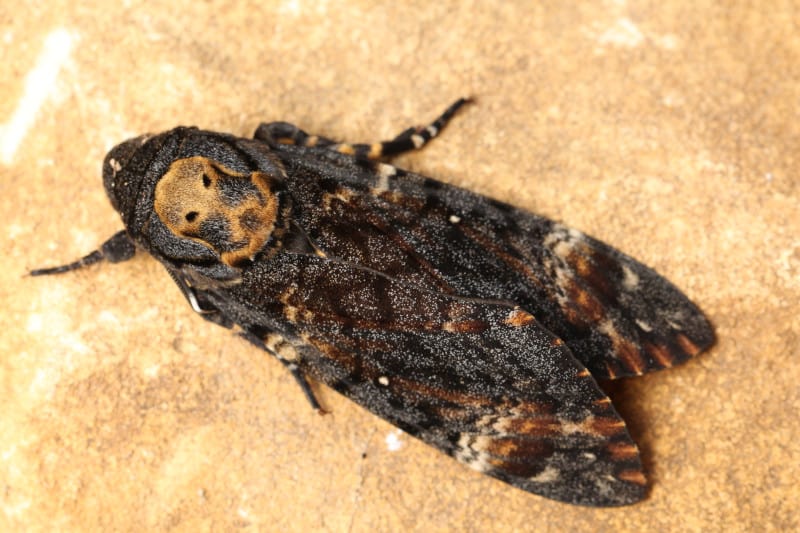
Death’s-head Hawkmoth Distribution, Habitat, and Ecology
The species bearing the common name of Death’s-head Hawkmoth also have different habitat ranges. That alone sets them apart from many of their peers. One appears in parts of Europe. The other two members of the genus, however, live across widely scattered sections of Asia.
Impressively, all known forms of this amazing insect seem to be highly adaptable to varying habitats. As a general rule, though, the insects appear in regions with substantial foliage present. These regions most commonly includes temperate forests, as well as parks, and even home gardens.
The larval form of the mind-blowing Death’s-head Hawkmoth stays on or near a single host plant. These it feeds on voraciously. It shows no preference for type of host. The adults show a preference for honey, in addition to fruit. As a result, mature individuals often raid the hives of honeybees.
Its own natural predators, meanwhile, consist of the same as other moths. These typical threats mainly consist of the various avian species found in its region. Many bats also love to feed on it, though. Finally, the chirping ability it evolved serves the intended purpose of deterring these.
Species Sharing Its Range
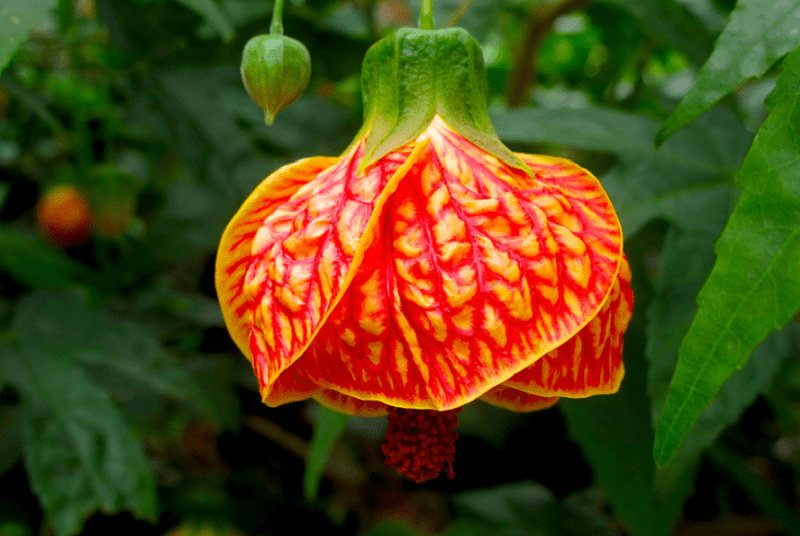

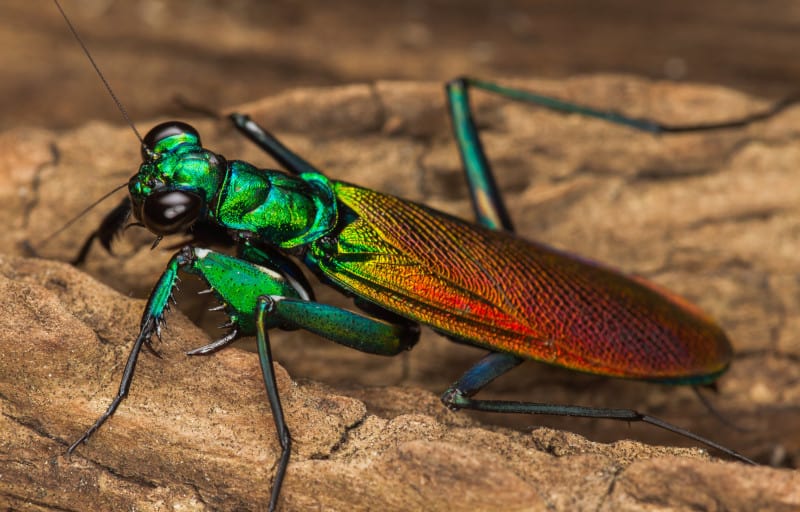
Check out our other articles on 5 Natural Marvels of Iceland, Eurasian Red Squirrel, Coyote Gulch, Balanophora coralliformis, Humboldt Squid, Wallace’s Flying Frog, Earless Monitor Lizard









Leave a Reply